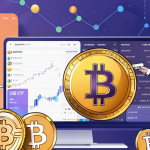Decoding World War II: One Message at a Time

In the turbulent landscape of World War II, where battles raged on land, sea, and air, a silent war of intelligence was being waged in the shadows. While Alan Turing was orchestrating the decryption of the Enigma code at Bletchley Park in Europe, an equally formidable force was at play on the other side of the globe. In a nondescript basement at Pearl Harbor, the U.S. Navy’s Combat Intelligence Unit, also known as Station Hypo, was scripting its own chapter in the history of cryptography, hacking, and cybersecurity.
Deciphering the ‘Enigma’
Germany, recognizing the strategic importance of secure communication, transmitted thousands of coded messages daily using a complex encryption device called “The Enigma”. These messages ranged from high-level directives from generals to mundane details like weather reports and supply ship inventories. Turing, along with his fellow codebreakers, embarked on a mission to intercept and decipher this vital information, ultimately tilting the scales of the war in favor of the Allies.
Stationed at Bletchley Park, Turing initiated a relentless battle against the formidable Enigma. His creation, the “bombe,” evolved into a codebreaking factory, decoding a staggering 84,000 Enigma messages each month by 1943. Turing’s personal triumph involved decrypting the Enigma used by U-boats in the North Atlantic, saving crucial supply convoys from the imminent threat of German torpedoes.
The Turingery
Turing also searched for a way to break into the torrent of messages suddenly emanating from a new, and much more sophisticated, German cipher machine.
The British codenamed the new machine Tunny. The Tunny teleprinter communications network, a harbinger of today’s mobile phone networks, spanned Europe and North Africa, connecting Hitler and the Army High Command in Berlin to the front-line generals.
Turing’s breakthrough in 1942 yielded the first systematic method for cracking Tunny messages. His method was known at Bletchley Park simply as Turingery, and the broken Tunny messages gave detailed knowledge of German strategy – information that changed the course of the war.
The Station Hypo
As the Battle of the Coral Sea unfolded in May 1942, U.S. Navy’s Combat Intelligence Unit “Station Hypo” intercepted encrypted Japanese radio messages that hinted at a different, potentially more perilous, Pacific operation. At the heart of their success was the decryption of Japan’s main operational code, JN-25b. Lieutenant Commander Joseph Rochefort’s team showcased an unprecedented ability to decrypt, translate, and act upon critical segments of Japanese communications within hours of transmission, marking a groundbreaking achievement in the realm of wartime cybersecurity.
Station Hypo’s triumph was not merely a product of chance; it was a testament to the relentless pursuit of knowledge and innovation in the realm of defence and security. The ability to decipher encrypted messages in real-time became an invaluable weapon, offering Allied forces a strategic edge by anticipating and countering Japanese maneuvers effectively.
Impact on Operations
The decrypted intelligence didn’t merely serve as an intellectual pursuit; it directly influenced strategic decision-making and operational success. From countering lingering threats in the Pacific and Atlantic Ocean to securing decisive victories in pivotal battles, the decrypted messages provided a compass for military actions. This underscores the profound impact that timely and accurate information can have on shaping the course of operations.
Closing Thoughts
In the context of World War II, the narratives of Turing’s Bletchley Park and Rochefort’s Station Hypo emerge as powerful symbols of encryption, decryption, hacking, and cybersecurity. These stories underscore the universal significance of breaking codes during times of conflict, emphasizing that the battlefield extends beyond physical front lines to the intricate domains of encrypted communication.
The legacy of both entities serves as a poignant reminder that the history of warfare is also a history of minds unraveling the secrets encrypted in the language of conflict. In the evolving landscape of modern cybersecurity, the lessons learned from Turing and Rochefort continue to echo, shaping the strategies and technologies that defend against the unseen threats lurking in the digital realm.









